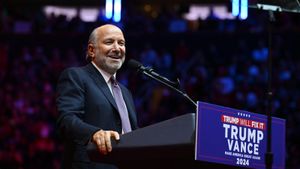A significant step forward for public health legislation occurred when the UK Parliament approved the phased smoking ban aimed at curbing tobacco use among the nation’s youth. This decisive action came as part of broader health reforms fueled by growing concerns over rising smoking rates and related health issues. The new law seeks to prohibit anyone aged 15 or younger from purchasing cigarettes, embodying the government’s commitment to create healthier generations. With this development, the UK joins numerous countries implementing similar measures to combat tobacco consumption.
Debates within Parliament showcased both support and opposition to the legislation, highlighting its contentious nature. Proponents hailed the ban as a shield for children against the harms of smoking, aligning with the government’s public health goals. On the other hand, critics, including Conservative Party leader Kemi Badenoch, argued against the ban, contending it infringes on personal freedoms and diminishes individual choice. Badenoch emphasized the importance of personal accountability rather than government intervention. Yet, the overarching sentiment among health advocates was clear: immediate action is necessary to protect younger generations from the dangers of tobacco.
Health organizations lauded the parliamentary decision, emphasizing the urgency of reducing smoking rates to alleviate the burden of related diseases. According to the National Health Service (NHS), smoking remains the leading cause of preventable death across the UK, accounting for over 78,000 deaths annually. With statistics like these, supporters of the ban believe curtailing cigarette access for youngsters may significantly decrease these alarming numbers.
This legislation is especially timely, considering the recent rise of e-cigarettes and vaping among youth, which some experts claim could serve as gateways to traditional smoking. The phased approach proposed involves gradually raising the legal purchase age for cigarettes, aiming to phase out tobacco use entirely among new generations. Initially, the law will prevent sales to those under 15 years old, eventually extending this prohibition to cover anyone born after a specific year.
Critics of the ban are concerned about potential black markets and the possibility of young individuals sourcing cigarettes illegally, as demonstrated by instances surrounding similar prohibitions historically. They question whether such measures will genuinely deter youth from smoking, arguing proactive education and support might be more effective tools.
Parliamentary discussions also revealed the broader implications of the smoking ban within the socio-political climate of the UK. The divide between the government and opposition parties became evident, positioning the smoking ban within the wider discourse about health initiatives, personal liberties, and government responsibilities. While some experts assert the ban could serve as a potent tool to cut the smoking rates significantly, others caution against potential unintended consequences.
Surveys reflecting public opinion reveal varied perspectives on the issue. A substantial portion of the population supports tougher regulations on tobacco sales, particularly when aligned with youth protection interests. Conversely, others express skepticism about the effectiveness of such bans, echoing concerns raised by Badenoch about personal freedom and individual rights.
This legislation emerges as part of a broader strategy from Prime Minister Rishi Sunak’s administration, which has been proactive about public health reforms and reducing tobacco harm. The Prime Minister himself has championed numerous health initiatives aimed at fostering well-being across the UK. According to reports, he envisions the closing of loopholes and stricter enforcement for existing regulations to supplement the new smoking laws.
Key stakeholders, including health advocacy groups, have expressed hope for this initiative to establish foundational changes within societal norms surrounding tobacco. The target is not merely to legislate against smoking but to change the overall perception of tobacco use among youth. Billboards, social media campaigns, and educational outreach programs are on the agenda to complement the legal restrictions.
The phased approach also aligns with many governmental policies across Europe aimed at reducing youth smoking rates. Countries such as Australia and Canada have successfully implemented similar strategies, resulting in significant declines. Observers are optimistic these lessons will inform the UK's efforts, leading to effective measures to address youth smoking concerns.
Experts agree on the importance of continuous evaluation of the ban’s effectiveness. Monitoring compliance, studying smoking prevalence among youth, and adaptability for potential modifications will be key components of this initiative’s success. It's about creating measurable metrics and defining success, not just passing legislation.
Despite the challenges anticipated, advocates remain positive, calling the ban both ambitious and necessary. The legislative measures represent not only legal changes but also social shifts toward healthier norms, deeply rooted within the community. If executed well, supporters argue this initiative could lead to groundbreaking changes, potentially saving lives and resources for the health system.
Finally, the attention now shifts toward potential reactions from various sectors of society. Businesses involved in tobacco production and retail will likely voice concerns about the economic impact of such restrictions. Discussions about ethical business practices and balancing profit margins against social responsibility will dominate conversations moving forward.
This landmark decision signifies more than just political maneuvering; it embodies the recognition of health as a national priority. By preventing youth access to tobacco products, the UK Parliament aims to protect and promote the health of future generations. Observers will undoubtedly be watching closely as the implementation of the smoking ban evolves, eager to see if it successfully reduces smoking rates and creates lasting change.



